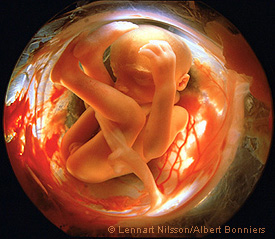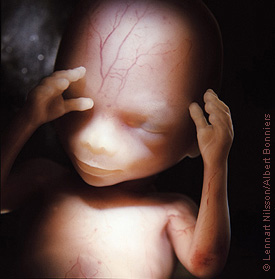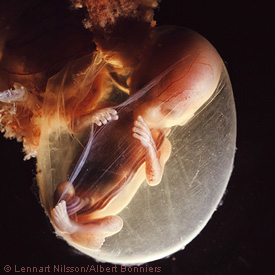18 – 20 Weeks Post-LMP
16 – 18 Weeks Post-Conception
 The formation of the breathing passages, called the bronchial tree, is complete. The formation of the breathing passages, called the bronchial tree, is complete.
By 20 weeks the larynx or voice box may show movement similar to crying after birth.
The skin has developed sweat glands and is covered by a greasy white substance called “vernix,” which provides protection from the amniotic fluid.
By 20 weeks gestation, the unborn child has the physical structures necessary to experience pain. There is evidence that by 20 weeks gestation fetuses seek to evade certain stimuli in a manner which in an infant or an adult would be interpreted to be a response to pain. Anesthesia is routinely administered to fetuses who are 20 weeks gestational age or older who undergo prenatal surgery ” (Title 63 O.S. § 1-738.10).
The 20-week the fetus weighs about 9 ounces and measures about 10 inches.
|


 The formation of the breathing passages, called the bronchial tree, is complete.
The formation of the breathing passages, called the bronchial tree, is complete.